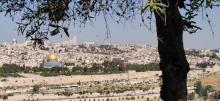
This blog post is part of a series jotting through my trip to Israel in June 2019. For contents page for the posts see the Introductory Post. If I've reported something incorrectly, please let me know via post comments (below) or my contact page. All photographs are Copyright © James Oakley, June 2019, unless indicated otherwise.
The first full day, we were driven to the Mount of Olives so we didn't need to walk up both sides of the Kidron Valley.
The Mount of Olives is a hill to the east of the city of Jerusalem. Separating the Mount from the city is the deep (and usually dry) Kidron Valley. The view from the Mount of Olives towards the city is iconic, with the city dominated by the Dome of the Rock, the mosque on Temple Mount on the site of the former temples. Remember the Western Wall is to the west of the old temple. So the Western Wall, where we were the night before, is behind the temple from here. Our hotel is to the north, so to the right of the city viewed from here.
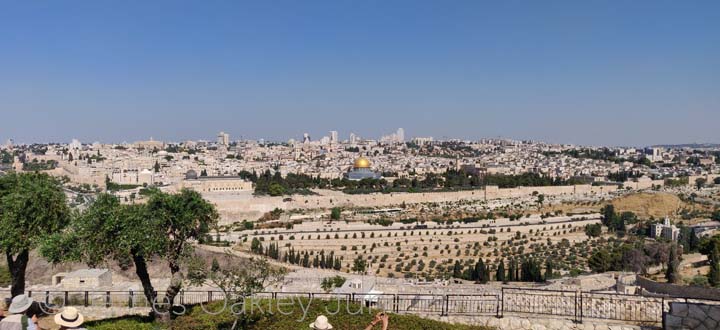
The Mount of Olives is a very significant place in the Bible. Jesus collected his donkey on Palm Sunday from Bethany at the Mount of Olives, a small village just the far side of the Mount. He probably rode into Jerusalem the same route we walked that day. Don't confuse this village with the one just named Bethany, a small distance further east again, the home of Martha, Mary and Lazarus. Because the Mount of Olives and Bethany were close enough to the city to be walked to on the Sabbath, many Jews in the time of Jesus would stay there at the big festivals such as Passover.
Jesus also ascended into heaven from the Mount of Olives (Acts 1:12). We are told that "a cloud hid him from their site" (Acts 1:9). We were in Jerusalem at the same time of year as the ascension, and the one thing you would not find in the sky were clouds. The presence of a cloud, at just the right time, must have been God's doing, symbolising Jesus entering heaven where God himself dwells, symbolised in the Old Testament by a cloud. Quite moving to think we were standing at the very spot from where Jesus returned to his Father, visibly, in the presence of his disciples.
From the Mount of Olives, we headed down a very steep street, fortunately with a handrail. I say "street" rather than "path". Our bus drove us round the main roads to the Mount of Olives. You can get a taxi up there, and it seems they drive straight up this 1:4 narrow road, so we had to keep moving to the side to let them pass.
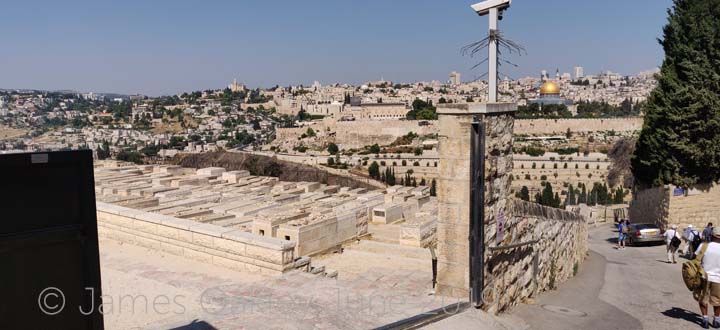
In the picture above, you'll notice a large number of graves. Some Jews believe that when the Messiah comes he will come first to the Mount of Olives. (He did). Texts like Zechariah 14:4 inform this. They therefore wish to be buried on the Mount of Olives, facing towards the city. In fact, the whole western hillside of the Mount is covered in cemetries.
Half-way down the hill is a beautiful site named Dominus Flevit (Latin: "Jesus wept"). This is where it is said Jesus wept over the city of Jerusalem (Luke 19:41-44), and may also be where Jesus delivered the message in Mark 13:3-37.
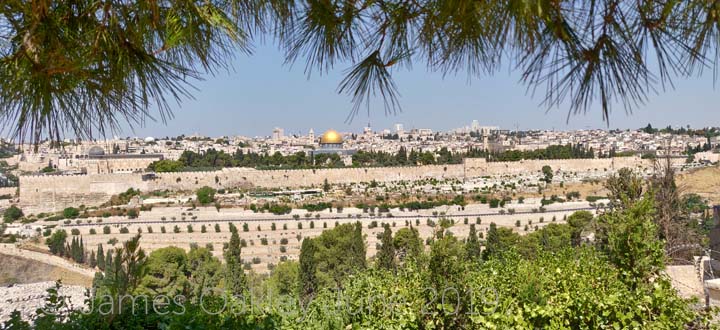
Dominus Flevit was significant for another reason. When visiting these ancient sites, you frequently have to choose between visiting the actual place where something happened, and visiting a place that allows you to picture where something happened. Frequently, the sites thought to be the actual locations have had churches built over the top of them. This is true of Gethsemane. We don't actually know the location of Gethsemane for sure, but the beautiful olive garden at Dominus Flevit gives you the chance to picture what Gethsemane would have been like when Jesus was there.
So it was here that we read the account from Matthew 26:36-46. Again, it was very moving to think that here (or somewhere very like this) Jesus prayed that he might have this cup taken from him. But, having prayed, he then agreed to do his Father's will, and to drink the cup of God's wrath that should have been mine.
For me it was in the garden,
He prayed: “Not my will, but Thine.”
He had no tears for His own griefs,
But sweat-drops of blood for mine.
(Charles H Gabriel, I Stand Amazed in the Presence)
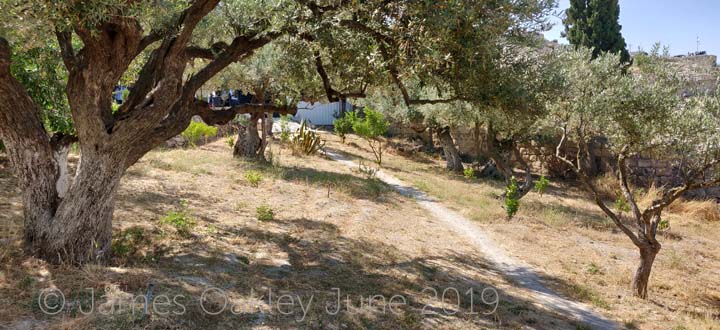
Further downhill is the actual supposed site of Gethsemane, a far more cultivated garden today. You enter it from this little gate, covered in June by this brilliantly pink bougainvillea.
 The garden does contain some very ancient olive trees, some would say they go back to the time of Jesus himself. (The Romans destroyed the city with fire in the year 70, so they probably date to shortly after the time of Jesus).
The garden does contain some very ancient olive trees, some would say they go back to the time of Jesus himself. (The Romans destroyed the city with fire in the year 70, so they probably date to shortly after the time of Jesus).
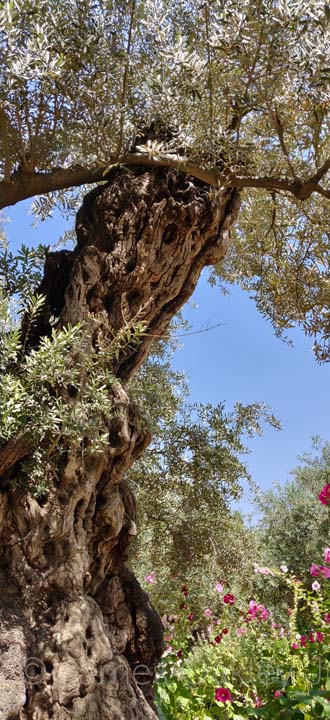
Although the garden may now look very different, there are still lots of invitations to slow down and reflect on what Jesus went through there. Whether that's plaques in the garden itself:
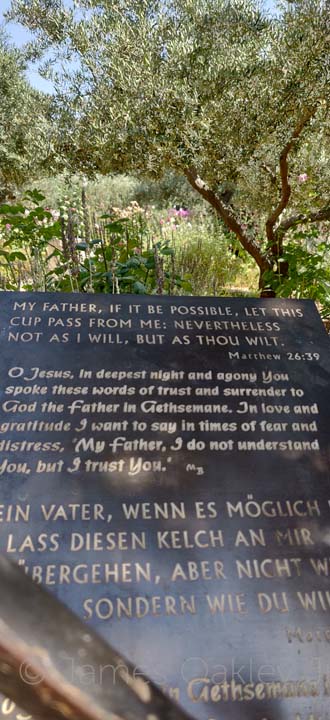
Or the church at the south of the garden that's bathed in gentle purple light by its stained glass. At the front of the church you'll find what is claimed to be the rock on which Jesus prayed. There is the slight problem that none of the gospel accounts mention a rock at all, but never mind! There is also artwork depicting Jesus' prayer and scenes from his arrest.
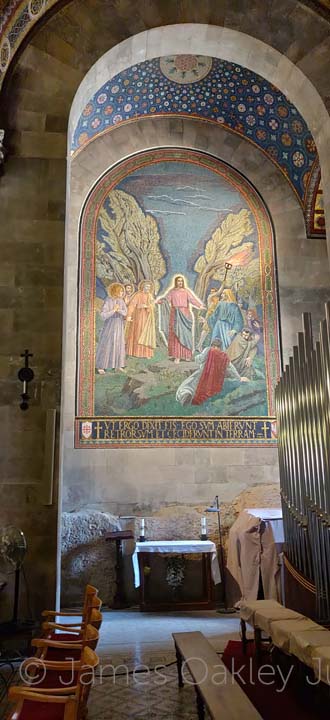
So we left Gethsemane, and crossed the bottom of the Kidron, to head up to the old city, entering through the modern Lion Gate. All this, and it's only 11am!
Recent comments